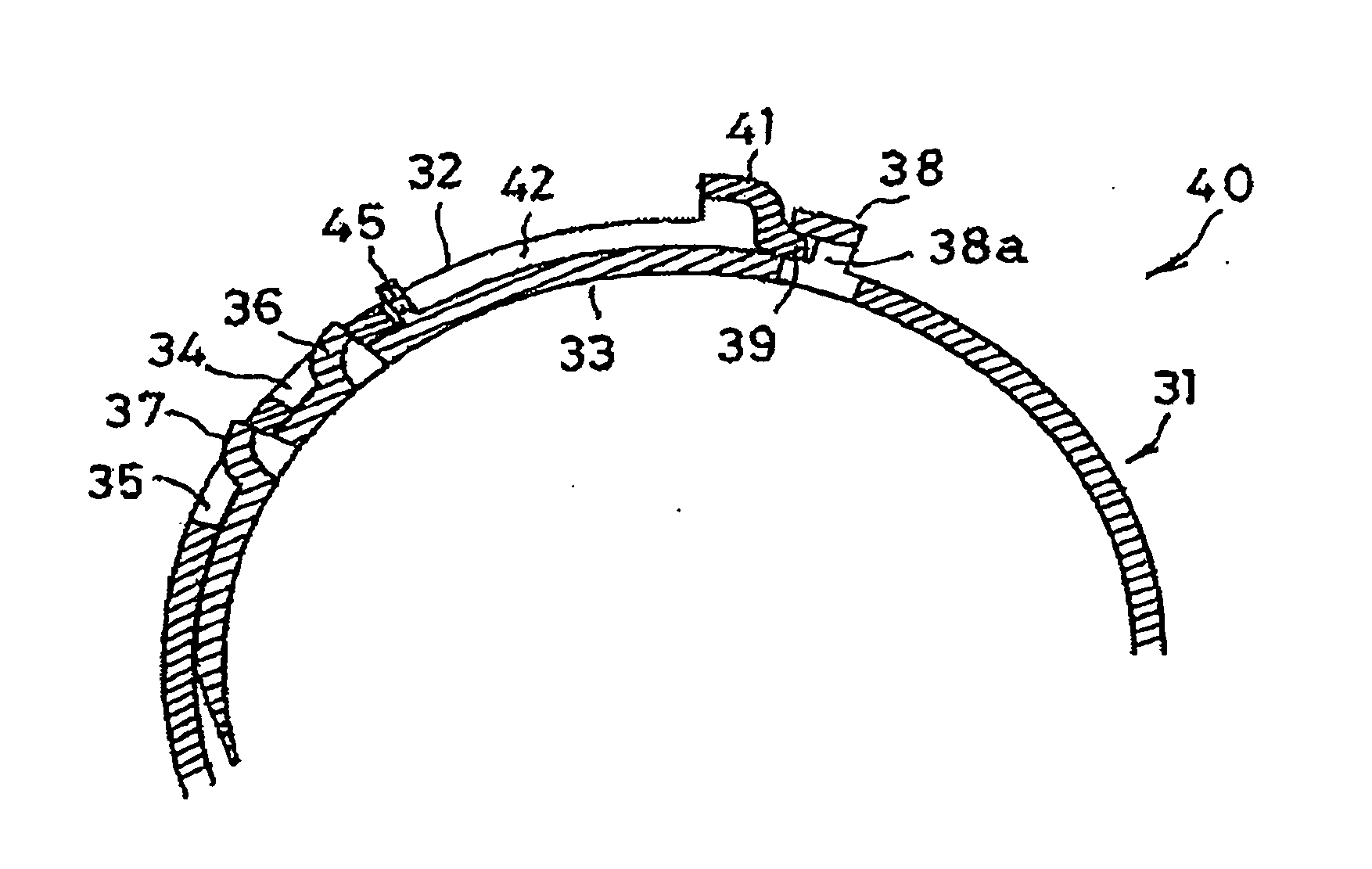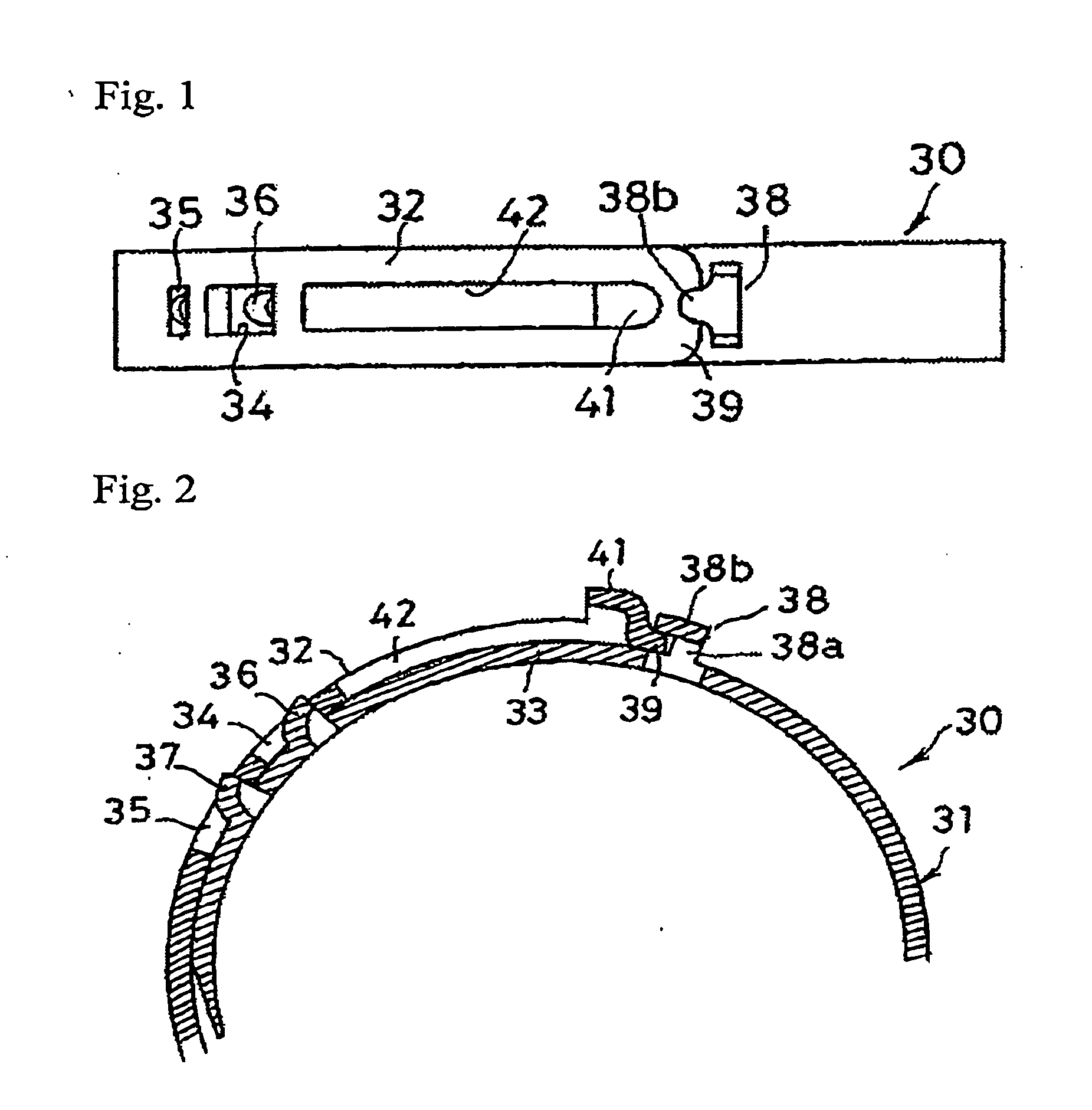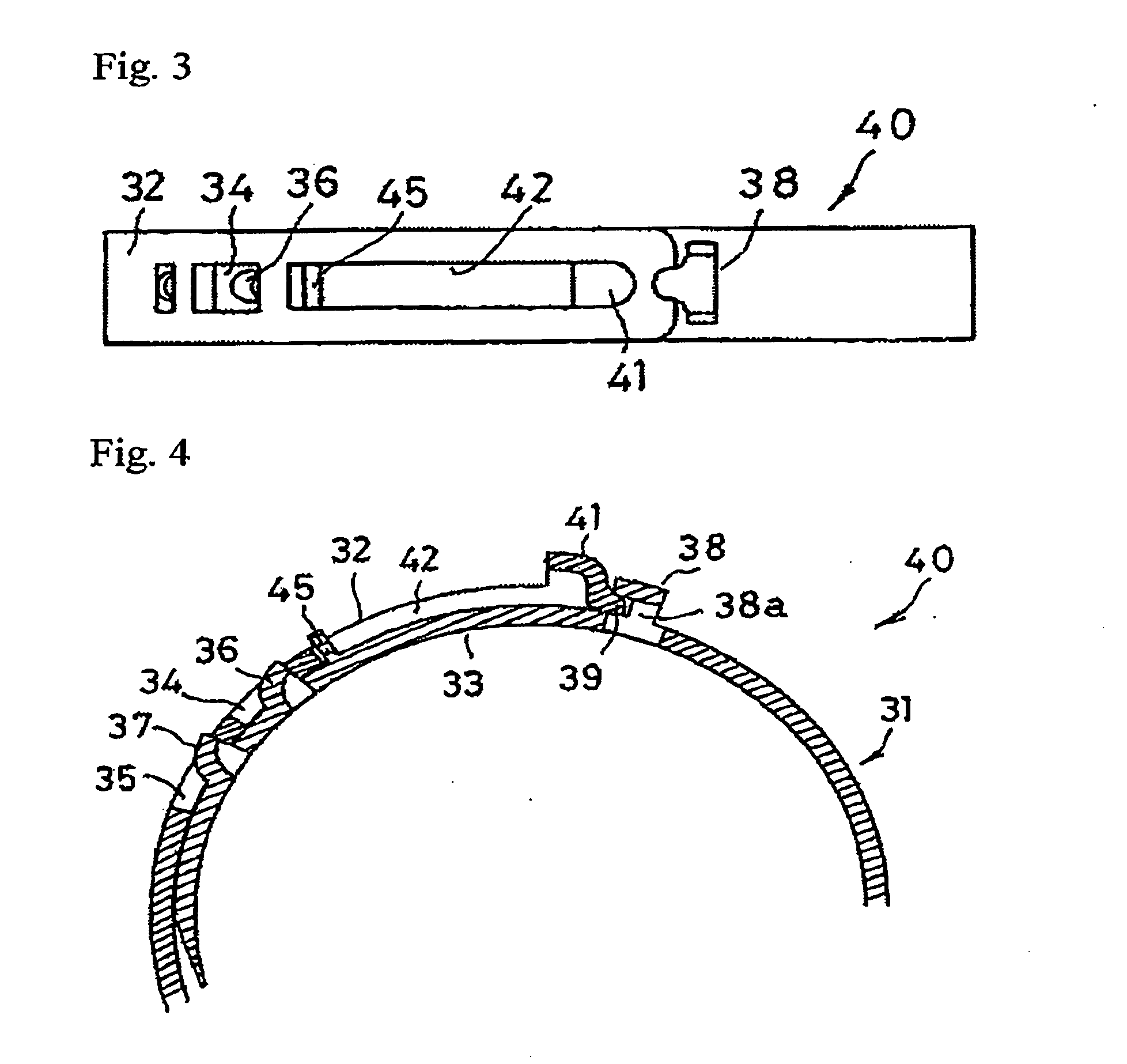Boot band
a technology of boot bands and flexors, applied in the direction of hose connections, snap fasteners, buckles, etc., can solve the problems of troublesome clamping operation, adversely affecting workability, and insufficient time needed for clamping operation, so as to prevent buckling and shorten the length of the band body. , the effect of reducing the length of the band body
- Summary
- Abstract
- Description
- Claims
- Application Information
AI Technical Summary
Benefits of technology
Problems solved by technology
Method used
Image
Examples
embodiment 1
[0108]FIGS. 1 and 2 show a boot band 30 in Embodiment 1 of the present invention, which is formed with a belt-like band body 31.
[0109] The band body 31 is formed by press-punching a thin metallic plate into the form of a belt that is used for clamping a member to be clamped (not shown) under the condition that the band body 31 is wound—in the shape of a belt or a ring—around the member to be clamped. The band body 31, which is wound like a ring, is formed with an outer-layer portion 32 that overlaps an inner-layer portion 33, and, as described below, these outer-layer and inner-layer portions 32, 33 are pressed in the diameter-reducing direction, so as to clamp the member to be clamped.
[0110] A first boot-band pawl 41 is formed on the top of the end section (free end side) of the outer-layer portion 32 of the band body 31 so as to rise outward in the radial direction. Also, the terminal end 39 extends in the longitudinal direction of the free end, which is located nearer to the to...
embodiment 2
[0119]FIGS. 3 and 4 show Embodiment 2 of the present invention. The boot band 40 in this embodiment is provided with a temporary-tacking pawl 45 in addition to the elements of the boot band 30 in Embodiment 1.
[0120] In this embodiment, a temporary-tacking pawl 45 is formed in the inner-layer portion 33, near the engagement pawl 36 and between the second boot-band pawl 38 and the engagement pawl 36. The temporary-tacking pawl 45 is formed so as to rise from the above-mentioned portion of the inner-layer portion 33 outward in the radial direction, and its width is such that it is insertable into the slit 42 of the outer-layer portion 32. When the band body 31 is wound like a ring, the temporary-tacking pawl 45 is inserted into and engaged with the slit 42 of the outer-layer portion 32. Such engagement makes possible a temporarily-tacked ring-like condition of the band body 31.
[0121] In such an embodiment, when the temporary-tacking pawl 45 is inserted into and engaged with the slit ...
embodiment 3
[0123]FIGS. 5 and 6 show Embodiment 3 of the present invention. In this embodiment, a rib 47 is formed as a reinforcing part on the boot band 50.
[0124] The rib 47 is formed between the second boot-band pawl 38 and the engagement pawl 36 in the inner-layer portion 33 of the boot band. In this embodiment, the rib 47 is formed with two parallel thin protrusion bars rising outward in the radial direction. The parallel rib 47 is formed in the circumferential direction so as to have approximately the same length as that between the second boot-band pawl 38 and the engagement pawl 36.
[0125] The rib 47 is formed as a reinforcing part so that the rigidity of the boot band 50 between the second boot-band pawl 38 and the engagement pawl 36 in the inner-layer portion 33 becomes large, and so that the cross-sectional second moment also becomes large. Because a load that generates buckling is proportional to the cross-sectional second moment, even if such a load—by which the outer-layer portion...
PUM
 Login to View More
Login to View More Abstract
Description
Claims
Application Information
 Login to View More
Login to View More - R&D
- Intellectual Property
- Life Sciences
- Materials
- Tech Scout
- Unparalleled Data Quality
- Higher Quality Content
- 60% Fewer Hallucinations
Browse by: Latest US Patents, China's latest patents, Technical Efficacy Thesaurus, Application Domain, Technology Topic, Popular Technical Reports.
© 2025 PatSnap. All rights reserved.Legal|Privacy policy|Modern Slavery Act Transparency Statement|Sitemap|About US| Contact US: help@patsnap.com



